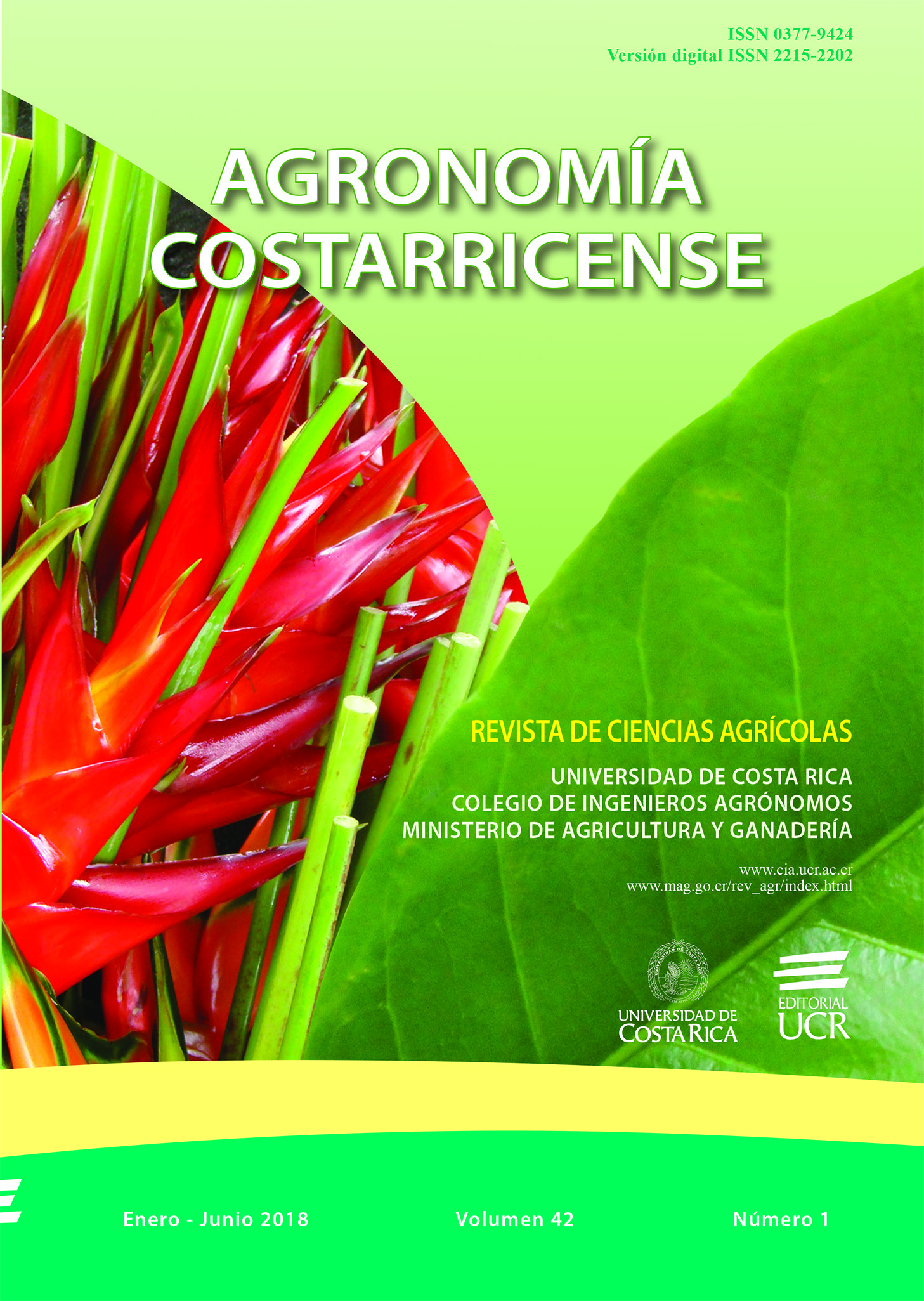Abstract
Morphological and molecular
characterization of Fusarium oxysporum f.
sp. apii associated to yellow wilt on celery in
Costa Rica. Celery is cultivated in provinces of
Costa Rica, such as Cartago, Heredia, Alajuela
and San José. Total production is approximately
25 metric tons annually. This crop is affected
by different pathogens but in the last few years
Fusarium oxysporum has caused substantial
damage at the plantation level. In celery, 4
pathogenic Fusarium races are known, they
are defined using the tolerance of the celery
cultivars to the pathogen. Race 1 affects only
yellow celery; race 2 affects both yellow and
green celery; race 3, the least pathogenic, is
virulent only for green celery; and race 4, is
the most aggressive causing losses in green as
yellow celery. In Costa Rica only the presence
of Fusarium oxysporum has been reported. To
better identify and describe the pathogen, isolates
were obtained from diseased plants that showed
a variety of symptoms including: delayed plant
growth, dwarfism, yellow and wilting foliage, as
well as blackening and damaged root systems.
Koch postulates and a morphological description
of the pathogen was done based on different
characteristics of spore quantity and the presence
of macro and microconidia on carnation leaf agar
(CLA), as well as colony appearance (color and
pigmentations), which were observed on potato
dextrose agar (PDA). Molecular characterization
was performed by sequencing the elongation
factor 1-alpha region (EF-1a). Results matched
some isolates found at the National Center for
Biotechnolgy Information (NCBI) related to F.
oxysporum f. sp. apii and our results further
suggested that we are dealing with the presence
of race 3 and/or 4 in Costa Rica.
##plugins.facebook.comentarios##

This work is licensed under a Creative Commons Attribution-NonCommercial-NoDerivatives 4.0 International License.
Copyright (c) 2018 Agronomía Costarricense


